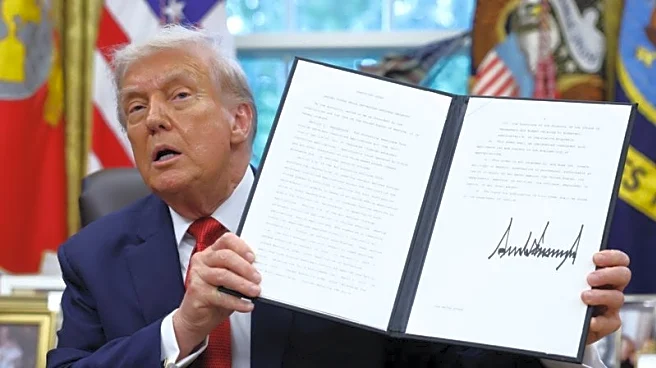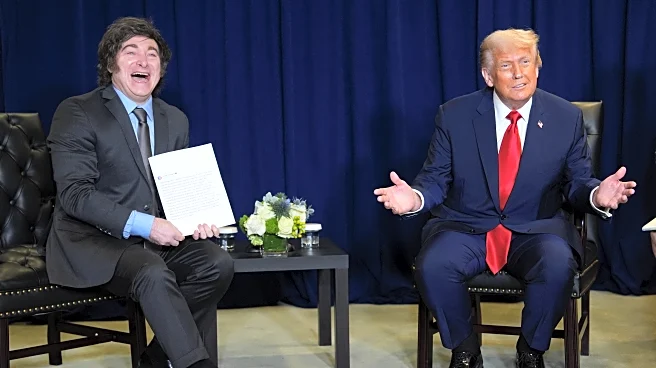What's Happening?
The Pentagon is set to prioritize homeland security and the Western Hemisphere, aligning with President Trump's 'America First' agenda. This strategic focus aims to protect the US from external threats and ensure national security. The initiative reflects a shift in defense priorities, emphasizing the protection of domestic interests and regional stability. The strategy includes reducing the civilian workforce at the Pentagon, with over 60,000 employees already cut under Defense Secretary Pete Hegseth's efforts.
Why It's Important?
The shift in defense strategy underscores the US's commitment to safeguarding its borders and maintaining regional stability. By focusing on homeland security, the Pentagon aims to address emerging threats and enhance national defense capabilities. The reduction in civilian workforce is part of a broader effort to streamline operations and improve efficiency within the Department of Defense. This approach aligns with the administration's goal of prioritizing domestic interests and reducing reliance on foreign engagements.
What's Next?
The Pentagon will continue to implement its strategic focus on homeland security, potentially leading to further reductions in civilian workforce and adjustments in defense operations. The strategy may influence future defense policies and budget allocations, emphasizing domestic security and regional stability. As the administration pursues its 'America First' agenda, the Pentagon's priorities may shift towards enhancing border security and strengthening military capabilities within the Western Hemisphere.
Beyond the Headlines
The strategic focus on homeland security raises questions about the balance between domestic and international defense priorities. While protecting national interests is crucial, the shift may impact the US's role in global security and its ability to respond to international crises. The reduction in civilian workforce also highlights the challenges of maintaining a lean and efficient defense operation while addressing complex security threats.












